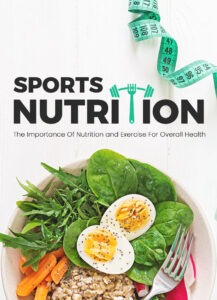What Are Hemorrhoids? Managing This Common Condition

Looking for more amazing products? Check out our online store and explore our collection here! Happy shopping!
Before diving in, please note: This post is for informational purposes only. If you’d like to know more about how we approach topics, feel free to check out our friendly Disclaimer Page.
Hey there, amazing readers! 
We’re committed to delivering quality posts, and your support (even just sticking around despite the ads) means everything to us. So, bear with us, and thanks for helping us keep the good vibes rolling. Now, on to the fun stuff!
TRANSLATE BUTTON AT THE END OF THE ARTICLE
Ah, hemorrhoids!
Just the word itself might make us cringe a bit, but believe me – hemorrhoids are something many people encounter at some point in their lives.
It can feel embarrassing to talk about, but understanding what hemorrhoids are, why they happen, and how to treat them can take away some of the mystery and stress surrounding them.
Let’s dive deep into the world of hemorrhoids in a friendly, straightforward way, exploring everything from causes and symptoms to treatments and lifestyle tips that can make a big difference.
What Are Hemorrhoids?
In a nutshell, hemorrhoids are swollen veins located in the lower rectum or around the anus.
They’re similar to varicose veins, which you might be more familiar with seeing in the legs, and they can cause discomfort, itching, and sometimes bleeding.
Hemorrhoids are super common, especially among adults over the age of 50, but younger people can develop them too.
Hemorrhoids can be either internal (inside the rectum) or external (around the anus).
Internal hemorrhoids tend to be painless, but they can bleed.
On the other hand, external hemorrhoids are often more uncomfortable and may itch or feel sore.
Sometimes, hemorrhoids can form a clot, creating what’s called a thrombosed hemorrhoid, which can be especially painful.
Why Do Hemorrhoids Happen?
You might be wondering why we get hemorrhoids in the first place.
They often stem from increased pressure in the lower rectum, which can happen for several reasons.
Here’s a look at some common causes:
Straining During Bowel Movements
One of the biggest culprits behind hemorrhoids is straining during bowel movements.
When we strain, it puts extra pressure on the blood vessels in the rectum and anus, causing them to swell and potentially lead to hemorrhoids.
Sitting for Long Periods
Sitting for long stretches, especially on the toilet, can also lead to hemorrhoids.
If we make it a habit to linger while using the bathroom (hey, we all love a good book or scrolling through our phones), this can increase pressure on the rectal area.
Chronic Constipation or Diarrhea
Both constipation and diarrhea can contribute to hemorrhoids.
With constipation, straining becomes more frequent, and with diarrhea, irritation and inflammation can lead to hemorrhoid formation.
Pregnancy
Pregnancy is another common time for hemorrhoids to develop.
The pressure from carrying extra weight, as well as hormonal changes, can cause blood vessels to expand.
Plus, the increased blood flow during pregnancy can make hemorrhoids more likely.
Weight and Lifestyle Factors
Carrying extra weight, especially in the abdomen, can put added pressure on the pelvic area, increasing the chances of developing hemorrhoids.
A diet low in fiber and high in processed foods can also contribute to constipation, which in turn raises the risk of hemorrhoids.
Recognizing the Symptoms of Hemorrhoids
So how do you know if you have hemorrhoids?
Hemorrhoids can come with a range of symptoms, and these symptoms can vary depending on whether the hemorrhoids are internal or external.
Here’s what to look out for:
Pain or Discomfort: This is especially common with external hemorrhoids.
If you feel soreness, burning, or discomfort near your anus, hemorrhoids could be the cause.
Discover "SUPERFOODS: The Key to Health and Balance
"
Itching or Irritation: Hemorrhoids can be itchy, which is often one of the first symptoms people notice.
Swelling or Lumps Around the Anus: External hemorrhoids may form small lumps or swell around the anus, which can be tender to the touch.
Bleeding During Bowel Movements: If you see small amounts of bright red blood on toilet paper or in the toilet bowl, it might be from hemorrhoids.
Internal hemorrhoids often bleed without causing pain.
Thrombosed Hemorrhoid: This happens when a blood clot forms within an external hemorrhoid, leading to a hard lump and intense pain.
It may require medical treatment if it doesn’t resolve on its own.
Diagnosing Hemorrhoids: When to See a Doctor
Most of the time, hemorrhoids can be managed at home, but if you’re experiencing significant pain, bleeding, or discomfort, it’s a good idea to see a doctor.
They can diagnose hemorrhoids by asking about your symptoms, conducting a physical examination, and possibly using tools like an anoscope (a small tube to view the anal canal) to get a better look.
If the symptoms suggest more than hemorrhoids, or if they’re persistent, doctors may recommend further tests to rule out other conditions like anal fissures, polyps, or inflammatory bowel disease.
At-Home Remedies for Hemorrhoids
Thankfully, there are plenty of ways to manage hemorrhoids at home, especially if they’re mild.
Here’s a look at some tried-and-true remedies:
Dietary Changes: Up the Fiber
One of the best ways to prevent and manage hemorrhoids is by adding more fiber to our diets.
Fiber helps soften stools, making them easier to pass and reducing the strain on our lower digestive tract.
Some fiber-rich foods to add to your meals include:
Whole Grains: Oats, brown rice, and whole-wheat bread are great sources of fiber.
Fruits and Vegetables: Apples, pears, berries, broccoli, and carrots pack a good fiber punch.
Legumes: Beans, lentils, and chickpeas are all fiber superstars.
Staying Hydrated
Drinking enough water is crucial in keeping our digestive system running smoothly.
Hydration helps soften stools and can prevent constipation, reducing the chances of developing or aggravating hemorrhoids.
Over-the-Counter Treatments
There are several over-the-counter creams, ointments, and pads designed specifically for hemorrhoids.
These products usually contain ingredients like witch hazel, hydrocortisone, or lidocaine to relieve itching, swelling, and pain.
Warm Baths or Sitz Baths
Soaking in a warm bath for 10–15 minutes can bring some soothing relief.
Sitz baths, which are designed to fit over the toilet, can help focus warm water on the affected area.
Adding Epsom salts to the bath can add an extra layer of relief.
Cold Compresses
Applying a cold compress to the area for 10–15 minutes can reduce swelling and numb the area, providing relief from pain and itching.
Just make sure to wrap the ice in a cloth to avoid direct contact with the skin.
Avoiding Long Periods of Sitting
Try to get up and move around if you’ve been sitting for long periods, especially on the toilet.
Staying active helps reduce pressure on the lower body and promotes better circulation.
Medical Treatments for Hemorrhoids
If at-home treatments aren’t providing enough relief, there are several medical procedures that can treat hemorrhoids effectively.
Here are some options doctors might recommend:
Rubber Band Ligation
This is one of the most common treatments for internal hemorrhoids.
In this procedure, a rubber band is placed around the base of the hemorrhoid, cutting off its blood supply.
The hemorrhoid then shrinks and falls off within a few days.
It’s a quick, outpatient procedure and often provides effective relief.
Sclerotherapy
In sclerotherapy, a chemical solution is injected into the hemorrhoid to shrink it.
Discover "Sports Nutrition: The Importance of Nutrition and Exercise for Overall Health
"
This method is less invasive and works well for smaller internal hemorrhoids.
Infrared Coagulation (IRC)
Infrared coagulation uses a burst of infrared light to coagulate the blood in a small internal hemorrhoid, shrinking it over time.
It’s usually quick, with minimal recovery time needed.
Hemorrhoidectomy
For larger or more severe hemorrhoids, surgery may be recommended.
A hemorrhoidectomy is a surgical procedure to remove the hemorrhoid completely.
While it’s more invasive, it provides a permanent solution for severe cases.
Stapled Hemorrhoidopexy
In this procedure, a stapling device is used to reposition the hemorrhoid tissue and cut off its blood supply.
It’s generally less painful than a hemorrhoidectomy and has a faster recovery time.
Preventing Hemorrhoids: Lifestyle Tips
While there’s no surefire way to avoid hemorrhoids altogether, there are definitely steps we can take to reduce our chances of developing them.
Here are some practical tips for keeping hemorrhoids at bay:
Stay Active: Regular exercise helps keep our digestive system moving and reduces pressure on the lower body.
Avoid Straining: Try not to strain during bowel movements.
If you’re feeling constipated, give yourself time and consider adding more fiber to your diet.
Eat a Balanced Diet: Incorporating fiber-rich foods can do wonders for digestion and overall health.
Don’t Hold It: If you feel the urge to go, don’t wait.
Holding it in can make stools harder and more difficult to pass later on.
Limit Alcohol and Caffeine: These can dehydrate us, leading to constipation.
Hemorrhoids and Daily Life
Having hemorrhoids can be uncomfortable, but they don’t have to disrupt our lives.
With the right combination of at-home treatments, dietary changes, and, if needed, medical procedures, it’s entirely possible to manage and even prevent hemorrhoids effectively.
Remember, there’s no need to feel embarrassed or isolated; hemorrhoids are common, and millions of people experience them at some point.
Embracing Health and Comfort
Hopefully, this guide helps shed some light on hemorrhoids, taking away some of the mystery and discomfort around the topic.
If you’re dealing with hemorrhoids, know that you’re not alone, and there are plenty of ways to find relief.
Sometimes, a few simple lifestyle changes can make all the difference.
So here’s to embracing health, comfort, and a happier you – with no fear of hemorrhoids getting in the way!

The Enlightenment Journey is a remarkable collection of writings authored by a distinguished group of experts in the fields of spirituality, new age, and esoteric knowledge.
This anthology features a diverse assembly of well-experienced authors who bring their profound insights and credible perspectives to the forefront.
Each contributor possesses a wealth of knowledge and wisdom, making them authorities in their respective domains.
Together, they offer readers a transformative journey into the realms of spiritual growth, self-discovery, and esoteric enlightenment.
The Enlightenment Journey is a testament to the collective expertise of these luminaries, providing readers with a rich tapestry of ideas and information to illuminate their spiritual path.
Our Diverse Expertise
While our primary focus is on spirituality and esotericism, we are equally passionate about exploring a wide range of other topics and niches 

To ensure we provide the most accurate and valuable insights, we collaborate with trusted experts in their respective domains 
Our blog originally focused on spirituality and metaphysics, but we’ve since expanded to cover a wide range of niches. Don’t worry—we continue to publish a lot of articles on spirituality! Frequently visit our blog to explore our diverse content and stay tuned for more insightful reads.
Hey there, amazing reader! 
Check out our store here and take a peek at some of our featured products below! Thanks for being awesome!













